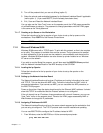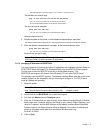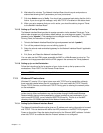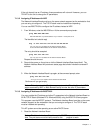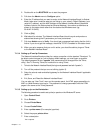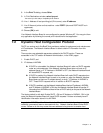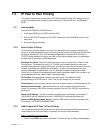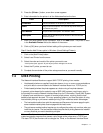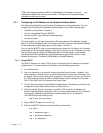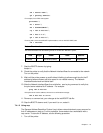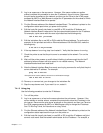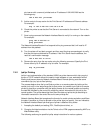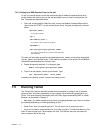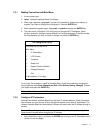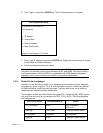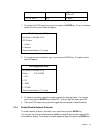
Chapter 7 - 12
HTML setup pages accessed by MAP or a Web Browser. Remember, the actual port
is always one higher than the base port number. The Status and Configuration page
indicates the actual port number.
7.4.1 Configuring the IP Address on the Network Interface Board
The Network Interface Board must be given IP address and routing parameters. You can
configure the IP address for the Network Interface Board in one of the following ways:
Ÿ Use MAP, as described in Chapter 3.
Ÿ Use the Internet Boot Protocol (BOOTP).
Ÿ Use reverse ARP (rarp, Ethernet II frame type only).
Ÿ Use arp and ping.
For each method, you will need to provide the Ethernet address of the Network Interface
Board. The Ethernet address is the 12-character code that is printed under Network Address
on the configuration status report each time the printer is turned on.
You can use the BOOTP, rarp, or ping procedures only when the Print Server is in its factory
default state (no IP information entered.) After the Print Server has an IP address, you must
use the Telnet utility, the AppleTalk NIManage utility for the Macintosh, or the Network
Interface Board HTML management pages accessed through the MAP utility or a Web
Browser to change an IP address, Subnet Mask and Default Gateway.
7.4.1.1 Using BOOTP
The BOOTP daemon is a native TCP/IP option for configuring the IP address of a diskless
network device. To communicate the IP address, use the following procedure:
1. Turn off the printer.
2. Log in as superuser on a host on the same subnet as the print server. However, if the
server resides on another subnet, complete this procedure to store the IP address in the
print server. Reconnect the print server anywhere on the network, and then use Telnet or
the HTML pages accessed by MAP or a Web Browser utility to change the IP address.
See 7.5 Running Telnet, for instructions on using Telnet.
3. Find the Ethernet address of the Network Interface Board. The address is printed on the
configuration status report each time you turn the printer on.
4. Edit the hosts file (usually /etc/hosts) or use NIS or DIS to add the IP address and
Network Interface Board's node name. See the network administrator for the IP address.
For example, a Network Interface Board named printfast with an IP address of
192.9.200.200 has the following entry:
192.9.200.200 printfast
5. Stop the BOOTP daemon if it is running.
6. Edit the /etc/BOOTP tab file and add the following information:
nic_host:\
:ht = hardware type:\
:ha = ethernet address:\
:ip = IP address:\



